Llangennech oil spill: Clean-up is 'biggest challenge since the Sea Empress'
- Published
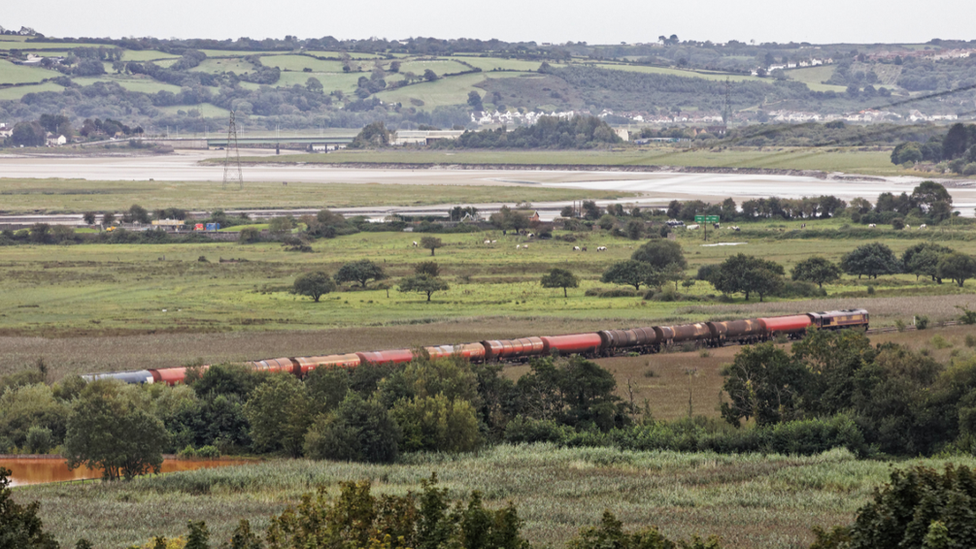
Diesel spilled into the nearby Loughor Estuary, a part of the Carmarthen Bay and Estuaries Special Area of Conservation
The ongoing clean-up of a diesel spill after a train derailment has been called "the most challenging recovery operation" in 25 years.
A freight train pulling 25 wagons, each containing up to 100,000 litres of diesel, derailed and spilled into the Loughor Estuary at Llangennech, near Llanelli, in August.
Natural Resources Wales compared it to the Sea Empress disaster in 1996.
The Rail Accident Investigation Branch is investigating the derailment.
In the past two months, around 30,000 tonnes of contaminated soil has been removed from the site.
Incident recovery manager Stuart Thomas, of Natural Resources Wales, said: "This is the most challenging recovery operation we've seen since Pembrokeshire's Sea Empress disaster 25 years ago".
The stranding of the Sea Empress oil tanker at the mouth of the Cleddau Estuary off Milford Haven in February 1996 resulted in 72,000 tonnes of crude North Sea oil escaping into the sea.
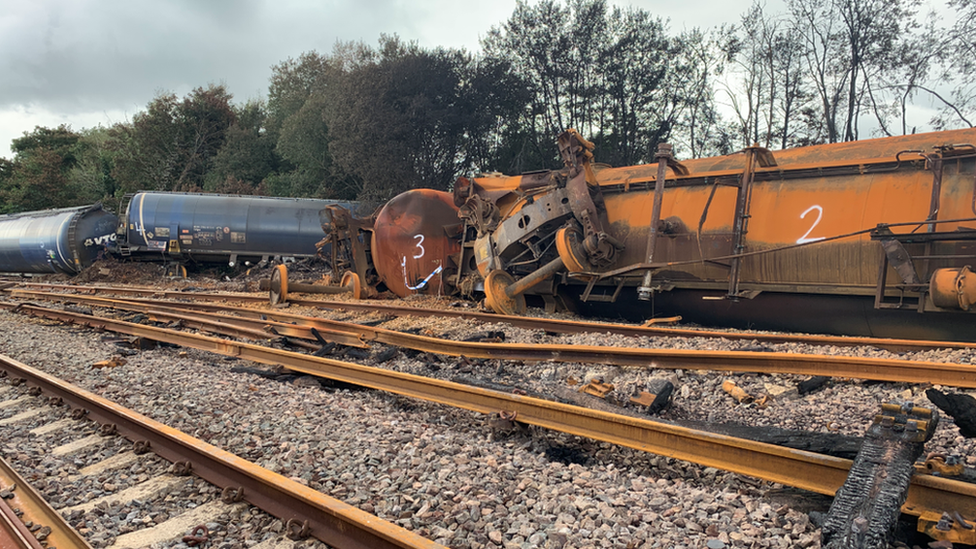
Ten of the trains 25 wagons derailed, each carrying around 100,000 litres of diesel
Thousands of birds died and about 120 miles of Welsh coastline were contaminated, with the total cost of the clean-up operation put at £60m.
Mr Thomas said "a phenomenal amount of work" had been carried out at the site of the Carmarthenshire train crash to safely remove the contaminated soil and reinstate the ground, despite being faced with flooding problems during severe weather.
Environmental contractors Adler and Allan aim to complete the remediation works by the end of February.
Contaminated soil from 164yds (150m) of railway at a depth of 6.5ft (2m) and width of 21yds (20m) has been excavated and taken to a licensed waste management facility near Merthyr Tydfil. The soil has been replaced with clean material from quarries in Carmarthenshire and Pembrokeshire.
Monitoring has shown the safety and quality of shellfish harvested from the area, such as cockles and mussels, is "well within regulatory limits".
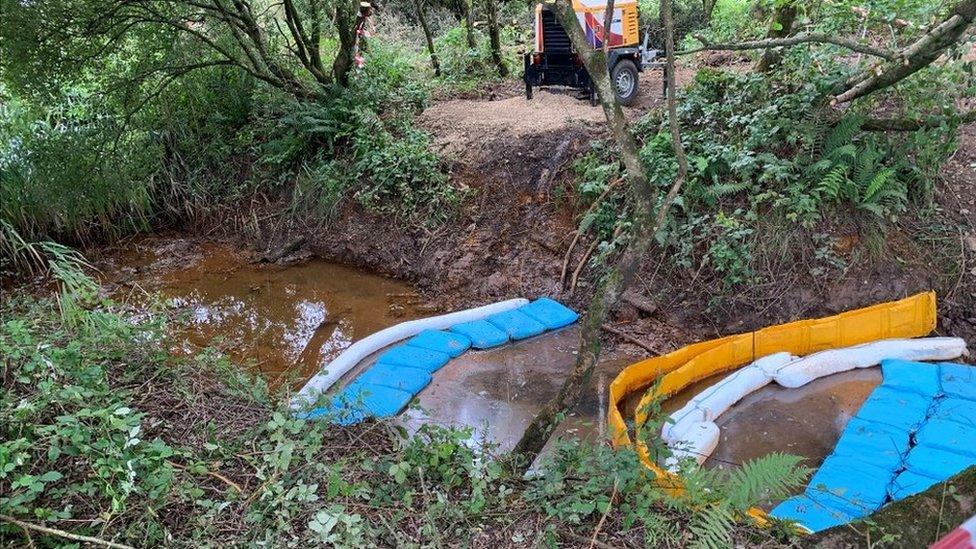
Efforts were made to stop diesel spreading in the river following the crash
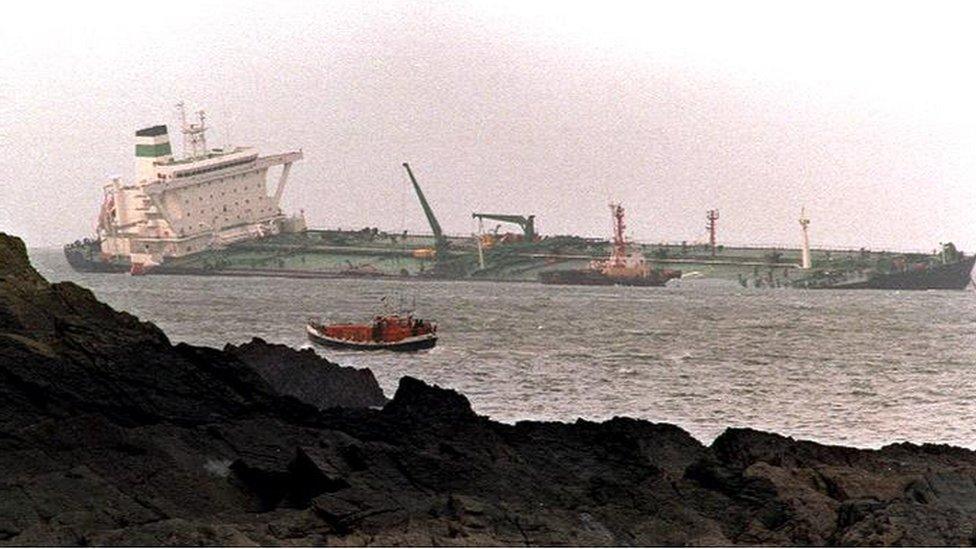
72,000 tonnes of crude oil spilled into the sea when the Sea Empress ran aground in February 1996
Mr Thomas said works were nearing completion, leaving only the cleaning of Coal Authority land, replanting and the reopening of the railway line.
But monitoring of the site and surrounding area, which includes four sites of special scientific interest and a special area of conservation, are expected to continue for around five years.
Bill Kelly, Wales route director at Network Rail, said it was down to the "quick thinking of our front-line railway colleagues, and our partners at Natural Resources Wales, that an environmental disaster was averted".
He said his team was working with Transport for Wales "to get services back up and running", with a new track already installed and repairs made to the signalling system.
- Published5 November 2020
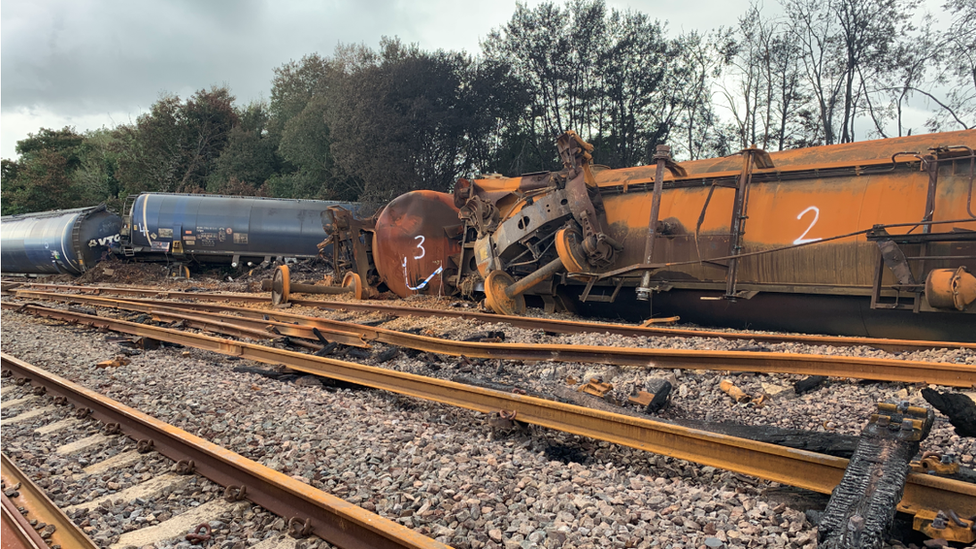
- Published13 October 2020

- Published14 February 2016
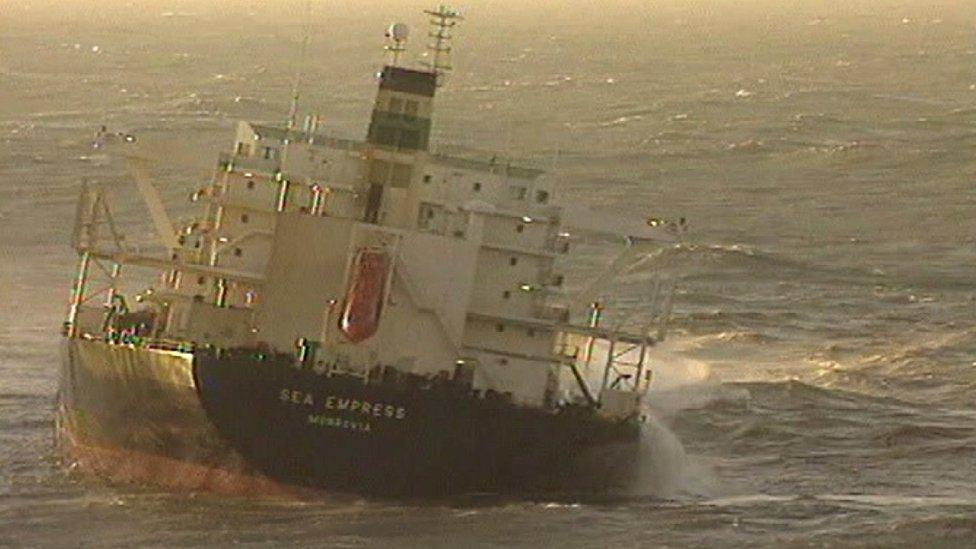
- Published21 September 2020

- Published6 September 2020

- Published2 September 2020
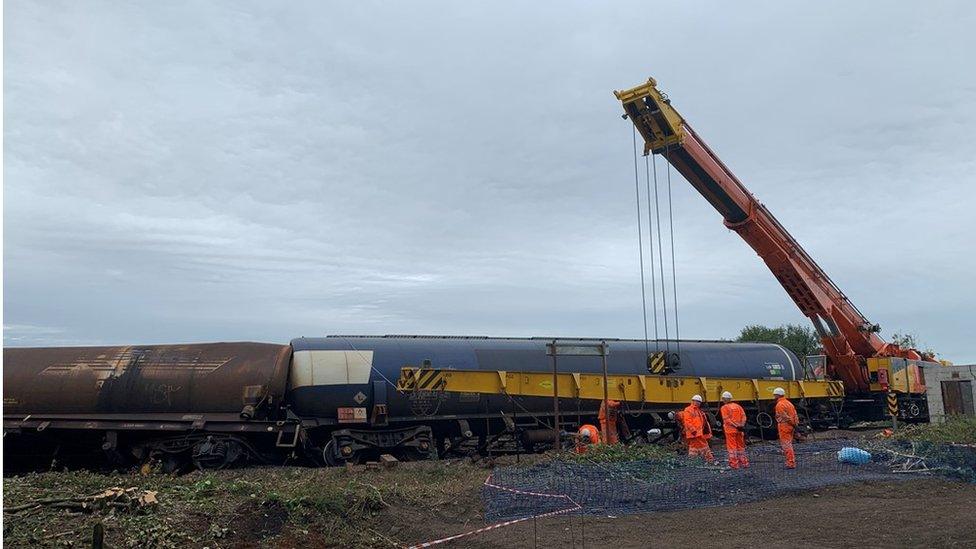
- Published30 August 2020

- Published28 August 2020
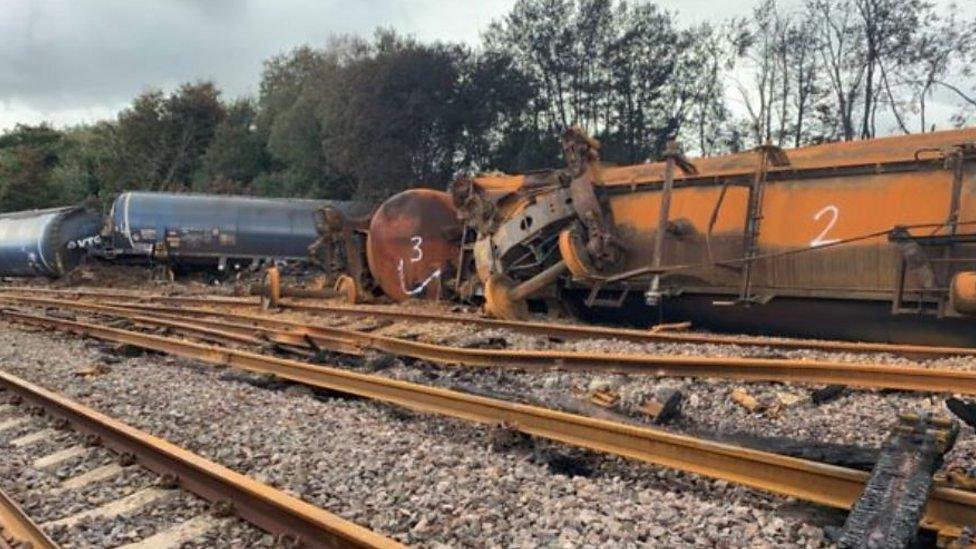
- Published27 August 2020
